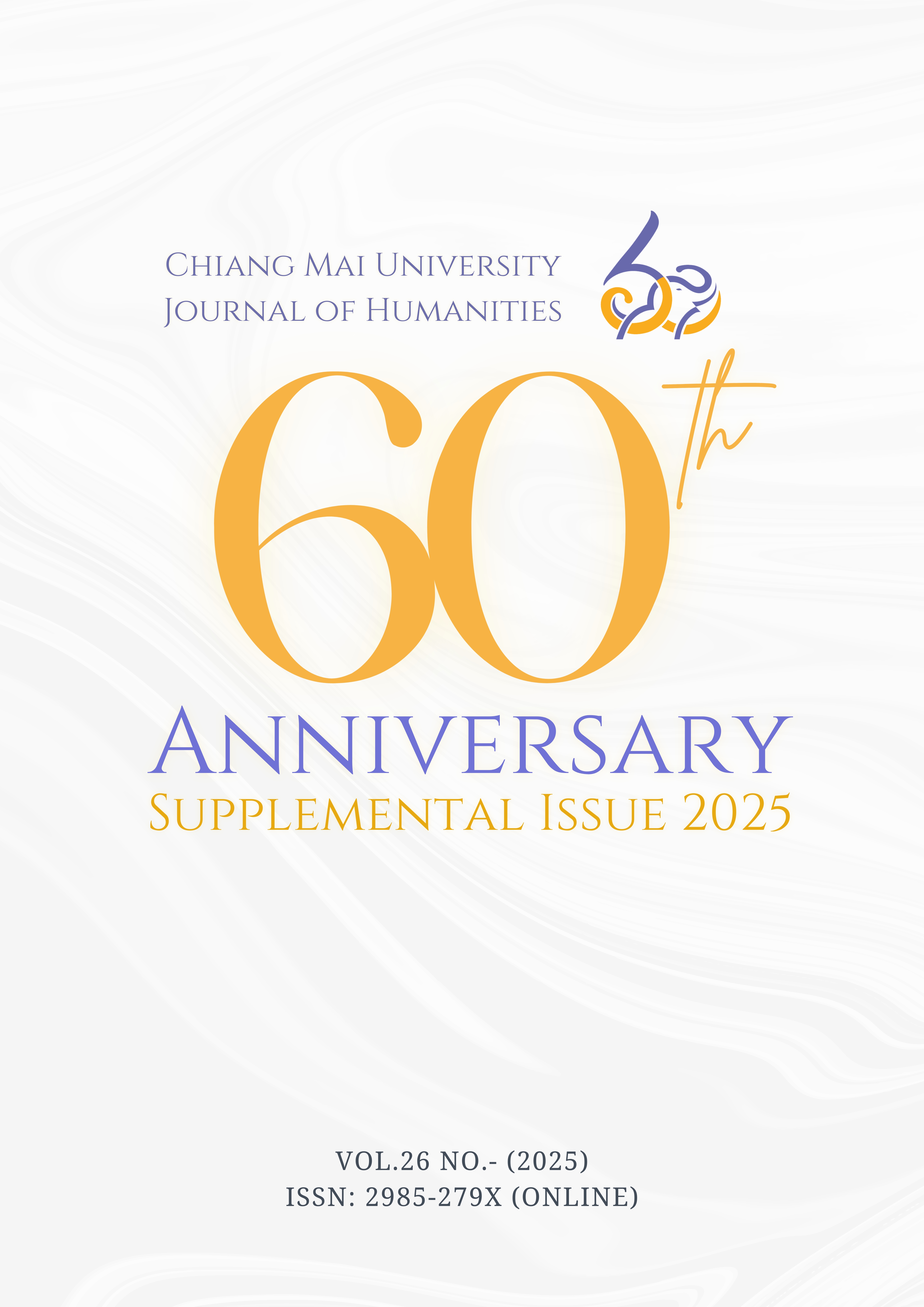Verbal morphology and negative constructions in Nocte
Main Article Content
บทคัดย่อ
This study explores the verbal morphology and negative construction mechanisms in Nocte, a language belonging to the Northern Naga subgroup of the Tibeto-Burman family, spoken by the Nocte community in Arunachal Pradesh, India. Based on data from the Haʔwa variety of Nocte, the research provides an in-depth analysis of the Nocte verbal morphology, with a focus on hierarchical agreement, inverse marking and cislocative. Unlike prior analyses that categorized tense and agreement markers as verbal suffixes, this study identifies agreement words as independent entities that carry tense, aspect, mood, and negation functions. The paper also highlights the complexity of negative constructions in Nocte, identifying multiple negative markers and structures that vary according to tense, context, and sentence structure. This work advances the understanding of Nocte's post-verbal morphology and situates its linguistic characteristics within the broader context of Tibeto-Burman languages.
Article Details

อนุญาตภายใต้เงื่อนไข Creative Commons Attribution-NonCommercial-NoDerivatives 4.0 International License.
เอกสารอ้างอิง
Bradley, D. (1997). Tibeto-Burman languages and classification. In D. Bradley (Ed.), Tibeto-
Burman languages of the Himalayas, 14, pp. 1–71. Pacific Linguistics. https://doi.org/10.2307/414343
Burling, R. (2003). The Sal languages. Linguistics of the Tibeto-Burman Area, 7(2).
Dài Qìngxìa and Lon Diehl. (2003). Jinghpo. In Graham Thurgood & Randy J.
LaPolla (eds.), The Sino-Tibetan languages, 401-408. Routledge.
Das Gupta, K. (1971). An introduction to the Nocte language. Shillong, North-East Frontier
Agency.
DeLancey, S. (1981). An interpretation of split ergativity. Language, 57(3), 626–657.
https://doi.org/10.2307/414343
DeLancey, S. (2004). The blue bird of ergativity. In F. Queixalós (Ed.), Ergativity in
Amazonia III (pp. 1–37). CELIA-CNRS.
DeLancey, S. (2011). Nocte and Jingphaw: Morphological correspondences. In G. Hyslop, S.
Morey, & M. Post (Eds.), Papers from the Northeast Indian Linguistic Society conference III (pp. 61–75). Cambridge University Press India.
DeLancey, S. (2014). Argument indexation (verb agreement) in South Central (Kuki-Chin).
Himalayan Linguistics, 22(1), 243–275.
Dutta, P. (1978). The Noctes. Shillong: Directorate of Research, Government of Arunachal
Pradesh.
Endangered Languages. (n.d.). Retrieved from http://www.unesco.org
Grierson, G. A. (1903). Tibeto-Burman family (Vol. 3, Part 2). Delhi, India.
LaPolla, R. (2010). Hierarchical person marking in the Rawang language. Retrieved from
http://victoria.linguistlist.org
Morey, S. (2011). Tangsa agreement markers. In G. Hyslop, S. Morey, & M. Post (Eds.),
Papers from the Northeast Indian Linguistic Society conference III (pp. 76–104). Cambridge University Press India.
Morey, S. (2013, forthcoming). Tone in Tangsa languages: A comparative study. Paper
presented at the Himalayan Languages Symposium, Canberra, Australia.
Post, M. (2007). A grammar of Galo (PhD dissertation). Research Center for Linguistic
Typology, La Trobe University.
Rahman, S. I. (2017). Verbal agreement in Nocte. Journal of the Southeast Asian Linguistics
Society, Special Publication No. 2, 167–176.
Rahman, S. I. (2018). An introduction to the Nocte verb. Northeast Indian Linguistics, 8,
–184. Asia-Pacific Linguistics.
Robinson, G. (1894). Namsangia. Asiatic Society of Bengal, XVIII.
Thurgood, G., & LaPolla, R. J. (Eds.). (2003). A subgrouping of the Sino-Tibetan languages.
In Sino-Tibetan languages (pp. 3–21). Routledge.
Weidert, A. (n.d.). Unpublished notes on Nocte.


